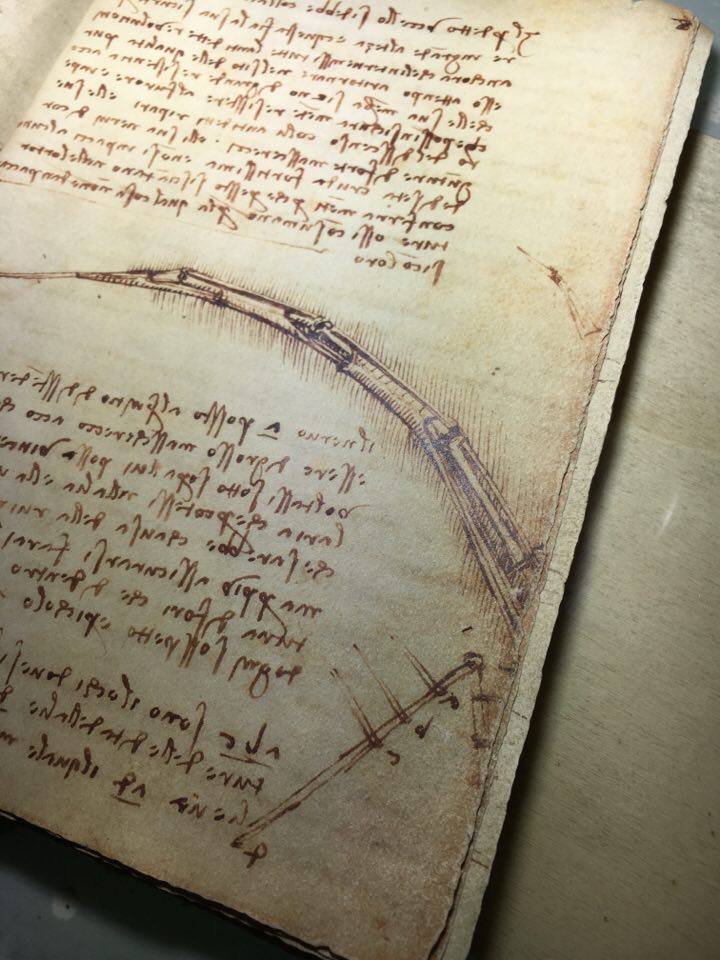Historical Backgrounds
Leonardo’s codex
From Leonardo’s whole creation we still have to this day more than 5000 pages of notes, written with his unique specular handwriting, which was oriented from right to left. After Leonardo’s death, his large quantity of writings, which can be considered the most considerable of the Renaissance, was subjected to many vicissitudes. As a matter of fact, both the appearance and the current partition of the manuscripts aren’t the original ones of when Leonardo was alive or even when they were passed down to Francesco Melzi, his loyal disciple.

Arundel Codex
Atlantic Codex
Trivulziano Codex (Codex Trivulzianus)
Codex on the flight of birds:
Ashburnham Codex
Codex of the institute of France:
Forster Codex
Leicester Codex (ex Hammer codex):
Windsor Papers
Madrid Codex
They’re her at the National Library of Madrid, where they were discovered only in 1966. They are two manuscripts bound in Moroccan Red. In order to be identified faster, they are called Madrid I and Madrid II. Most of the pages of Codex Madrid I, dating around 1490 and 1496, consists of 192 paper sheets (21×15 cm) of studies of mechanics. Whereas Madrid II consists of 175 paper sheets (21×15 cm) and focuses on studies of geometry and it can be dated around 1503 and 1505.
Source: Leonardo da Vinci science and technology national Museum
